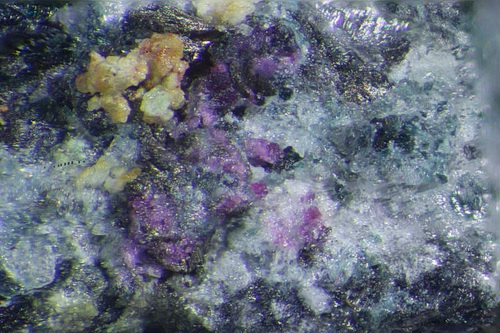
New minerals are discovered every year by geologists, but there is one mineral that was recently discovered with pretty unique features. This rare new mineral named putnisite was unearthed near Lake Cowan in remote Western Australia. Miners in Australia were looking for gold and nickel when they came across the oddly colored purplish pink rock and had it sent to researchers for analysis. The mineral was sent to the Commonwealth Scientific And Industrial Research Organization which then sent the mineral to Dr. Peter Elliot, a research associate at the South Australian Museum and the University of Adelaide for further study.
The study was published in Mineralogical Magazine, Journal of Mineral Sciences, which reported the new mineral found on volcanic rock, to occur as tiny brittle crystals only .02 inches (0.5 mm) wide. Elliot, a co-author of the study said “Most minerals belong to a family or small group of related minerals, or if they aren’t related to other minerals they often are to a synthetic compound-but putnisite is completely unique and unrelated to anything.”
Putnisite’s unusual chemical combination contains calcium, strontium, chromium, sulphur, carbon, oxygen, and hydrogen. This mad scientist combination makes it unique among the 4,000 known minerals around the world according to researchers. Elliot also adds that “It shows that nature seems far cleverer at dreaming up new chemicals than any researcher in a laboratory.”
Putnisite combines the elements strontium, calcium, chromium, sulfur, carbon, oxygen and hydrogen:
SrCa4Cr83+(CO3)8SO4(OH)16•25H2O. The mineral has a Mohs hardness of 1.5–2, a measured density of 2.20 g/cm3 and a calculated density of 2.23 g/cm3.
Minerals are usually named after the person who discovered them, in putnisite’s case, it’s named after mineralogist Drs Christine and Andrew Putnis. Putnisite is translucent, with a pink streak and vitreous lustre. The mineral currently has no commercial or practical use as it is too soft.
